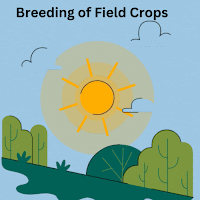
Drone Technology and its Application
in Agriculture
Author: Prachi S. Mahajan (M.Sc. Agriculture)
Drone technology, also known as Unmanned
Aerial Vehicles (UAVs), has been increasingly adopted in agriculture to enhance
farming practices and improve overall efficiency. Drones offer various
benefits, including cost-effectiveness, data collection capabilities, and the
ability to cover large areas quickly. Here are some of the common applications
of drone technology in agriculture:
1.
Crop Monitoring: Drones equipped
with high-resolution cameras and multispectral or hyperspectral sensors can
capture images and data of crops from the air. This data helps farmers monitor
plant health, identify areas of stress or disease, and assess the effectiveness
of irrigation and fertilization practices.
2.
Precision Agriculture: By
combining drone-collected data with Geographic Information System (GIS)
technology, farmers can create detailed field maps. These maps provide insights
into variations in soil properties, allowing for targeted application of
resources like water, fertilizers, and pesticides. This practice helps optimize
inputs and reduce environmental impact.
Illustration: Use of
drones for spraying in agronomical & horticultural crops
3.
Crop Spraying: Drones can be
equipped with spraying systems to apply pesticides, herbicides, or fertilizers
precisely to crops. This targeted approach reduces chemical usage and minimizes
human exposure to potentially harmful substances (this can be observed in the image
above).
4.
Crop Assessment and Yield Estimation:
Drones equipped with advanced sensors can assess crop health, estimate yield
potential, and predict harvest times. This information is invaluable for better
planning and decision-making in the agricultural process.
5.
Livestock Monitoring: Drones can also
be used to monitor livestock, enabling farmers to locate and assess the
condition of their animals in large or remote areas. This aids in detecting any
health issues or distress.
6.
Soil Analysis: Drones can
collect soil samples from different parts of a field, providing farmers with
crucial soil health data. This information helps in understanding soil
fertility and tailoring crop management strategies accordingly.










